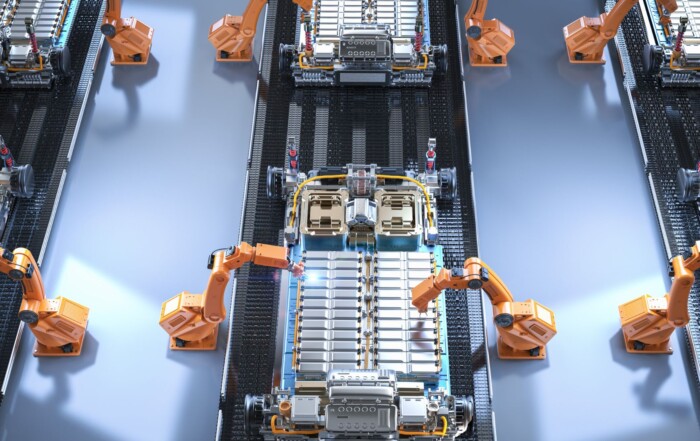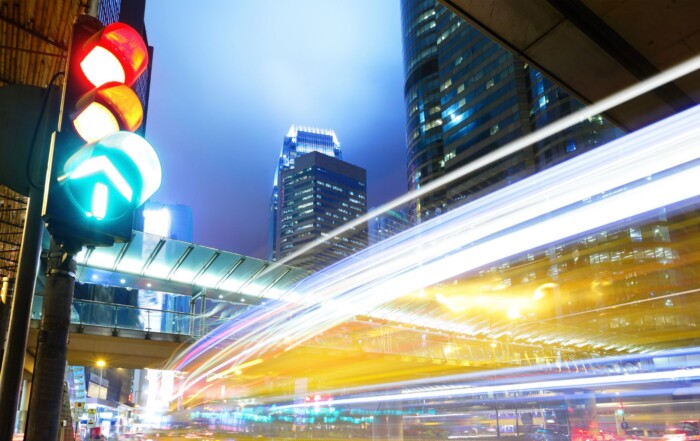Radar at every turn
Three applications you can find in almost all public buildings.
Our sensory organs do not pick up radar waves, because they lie outside the frequency range perceptible to us. It’s no wonder that we are often unaware of this technology. Thus, no one thinks about radar sensor systems while they’re shopping. Or if you take the lift to the 5th floor instead of the stairs.
There are very few ‘techies’ out there who put all building installations under the microscope like our radar experts do. And we confirm: radar follows your every step nowadays.
No reason to panic.
Don’t let this realisation get you worried: the radar sensor systems we encounter in our everyday lives are tested and classified to be harmless to our health. You have already been living with this technology for many years. And you may even take it for granted.
After all, you most often encounter radar in public places such as shopping centres. They are part of the installed building systems. The sensors contribute to safety, energy efficiency, and convenience by detecting the movement of persons or objects.
Time for change.
In terms of radar’s commercial use, motion detection is a true classic. It’s a simple application that has been available to the mass market since early on. Because in the seventies, a fashion trend prompted technology experts to find a new solution. The performance of PIR technology, which had dominated until then, dropped in the wake of a new fashion trend. The new, modern clothing materials emit less warmth and are difficult to detect by infrared sensors. This translated into a real boom for radar-based motion sensors.
How radar works.
The technology employs electromagnetic waves. A radar antenna emits a constant pulse to detect an object. If the signal hits an object or a living being, it is continuously reflected and sent back to the receiver.
Through this ‘echo’, the sensor detects whether there is something within the detection range. Via the constant signal, radar perceives the object’s change in position and thus its movement. Next, the sensors transmit this radar information onwards in order to trigger a function.
Lighting control is a typical example of the use of motion detectors. However, even more applications from the field of building technology rely on radar. And you encounter all of them in a typical shopping centre, integrated into electric entrance doors, lifts, and escalators.
Building technology: three cases for radar.
Lots of users – and performance to match.
These three example applications for radar provide us with more convenience in everyday life. The need for accessibility also means a greater need for automation. Continuous use places high demands on the sensors: countless people benefit from automatic doors, lifts, or conveyor belts every day.
Despite the high level of utilisation, users’ safety takes priority.
All these aspects are causing demands placed on building technology to explode. The components used have to be quality-checked, maintenance-free, and reliable.
Ideally suited.
Radar (from InnoSenT) meets these criteria. Electromagnetic waves are insensitive to temperature fluctuations or poor lighting conditions. Their functionality is not impaired by noise, dust, or moisture.
Thanks to their now small dimensions, the sensors are easy to integrate. Radar waves penetrate plastics or wood. This makes it possible to place them in a concealed manner, inconspicuously behind a cover. These advantages help minimise the equipment’s need for maintenance, while maximising its reliability. These are crucial reasons why building technology manufacturers opt for radar.
But radar can do more.
The technology not only offers pure motion detection, but also determines speed, direction of movement, and distance. These radar data enable the use of other functions as required, such as counting persons, contactless control and the filtering of cross traffic.
As a result, doors no longer remain open for no reason, while escalators change their direction of travel and avoid being activated needlessly. This improves the efficiency of the technical installations considerably. Radar-based automation thus makes getting around more comfortable and accessible and saves a large proportion of the building’s energy consumption.
As a form of contactless control, radar also boasts an important advantage in terms of hygiene. Switches or buttons in public buildings are dirty or contaminated with pathogens due to frequent skin contact. Through the use of motion detectors, there is no need for physical touching.
Sensors are everywhere.
Radar boasts advantages for all of us. Not only do we as end users benefit from the sensor system’s properties but building system manufacturers do too. That’s why we encounter this technology at every turn nowadays. Hardly any electronic entry door or escalator is not equipped with a little sensor.
Go ahead and see for yourself at your next visit to a shopping centre. Count all the little radar boxes you can find. And be amazed by how often you use radar technology without even noticing.
picture: ©engel.ac – stock adobe.com
Share this Content
Building Automation & Smart Home
Contactless and intelligent control for modern technology
Radar sensors take on many tasks for us, thus making our everyday lives easier, safer, and more efficient. They are a kind of sensory organ for objects for perceiving their surroundings. These technological assistants open up new possibilities for operating devices: contactless interaction between humans and devices. The sensors are the link for triggering or automating certain actions without contact or automating them.


